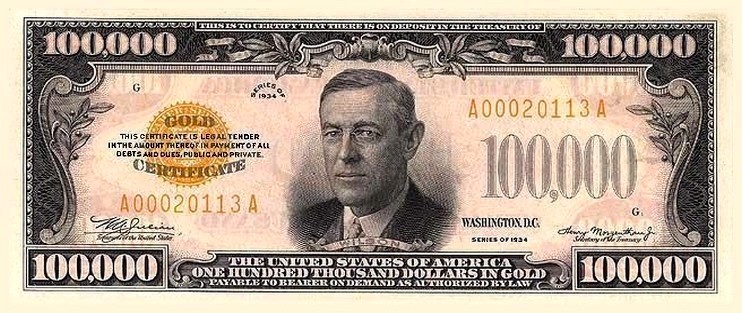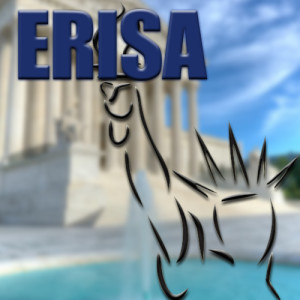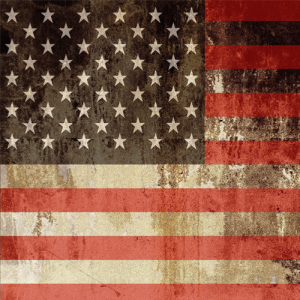Menu
Hot-Topics
November 27, 2025 | SCOTUS Adds Second Amendment Case to Docket
Tag: NJ attorney Scarinci

Federal Reserve Act of 1913
On December 23, 1913, President Woodrow Wilson signed the Federal Reserve Act into law. The landmark legislation created the Federal Reserve, which was intended to reform the country’s banking system and help secure economic stability. ...

Ware v Hylton: Supreme Court Power to Invalidate State Laws
Ware v Hylton: Supreme Court Power to Invalidate State Laws In Ware v. Hylton, 3 U.S. (3 Dall.) 199 (1796), the U.S. Supreme Court held that the federal courts are authorized to determine the constitutionality of state laws. The Court subsequently h...

Friedrichs v. California Teachers Association: 4-4 Tie Upholds Public Union Fees
On March 29, 2016, an equally divided U.S. Supreme Court affirmed the lower court ruling in Friedrichs v. California Teachers Association. The non-precedential per curium decision leaves the constitutionality of public union agency fees to be decided...

LGBT Adoption and Constitution’s Full Faith and Credit Clause
In V.L. v. E.L, 577 U. S. ____ (2016), the U.S. Supreme Court unanimously held that the State of Alabama must recognize an adoption by a same-sex parent that occurred in another state. The Court’s per curium decision rested on the Constitution’s ...

Gobeille v. Liberty Mutual Insurance Company: ERISA Pre-empts State Health Care Database
On March 1, 2016, the U.S. Supreme Court held that the Employee Retirement Income Security Act (ERISA) pre-empts a Vermont law requiring certain entities, including health insurers, to report payments relating to health care claims to a state agency ...

In re Eugene v. Debs: The Commerce Clause & Labor Strike Injunction
In In re Eugene V. Debs, 158 U.S. 564 (1895), the U.S. Supreme Court upheld the government’s use of a court injunction to order striking workers back on the job. In a unanimous decision, the Court held that the federal government had the right ...

Supreme Court Upholds Antitrust Act in Northern Securities Co. v. United States
In Northern Securities Co. v. United States, 193 U.S. 197 (1904), the U.S. Supreme Court held that a holding company formed to create a railroad monopoly violated the Sherman Antitrust Law. The government’s victory in the case helped solidify P...

Pollock v. Farmers Loan & Trust Co.: Federal Income Tax Violated the Constitution
In Pollock v. Farmers Loan & Trust Co., 157 U.S. 429 (1895), the U.S. Supreme Court held that federal taxes on interest, dividends and rents violated Article 1 of the U.S. Constitution. In 1913, the adoption of the Sixteenth Amendment nullifi...

United States v. E.C. Knight: Court Upholds Sherman Anti-Trust Act
In United States v. E.C. Knight, 156 U.S. 1 (1895), the U.S. Supreme Court held that the Sherman Anti-Trust Act was a valid exercise of Congress’ power under the Commerce Clause of the U.S. Constitution. However, it also held that the statute could...

Johnson v. the United States: ACCA Unconstitutionally Vague
In Johnson v. the United States, 576 US _ (2015), the U.S. Supreme Court held that the residual clause of the Armed Career Criminal Act was unconstitutionally vague and violated the due process rights of the petitioner. The statute imposes increased ...
Previous Articles
Key Takeaways from Oral Arguments in Court’s Controversial Voting-Rights Case
by DONALD SCARINCI on November 12, 2025
The U.S. Supreme Court recently heard oral arguments in Louisiana v. Callais, which involves a key ...
Key Cases to Watch During the Supreme Court’s November Sitting
by DONALD SCARINCI on November 5, 2025
The U.S. Supreme Court’s November sitting begins on November 3 and concludes on November 12, 2025...
SCOTUS Clears Way to Terminate Protected Status for Venezuelan Nationals
by DONALD SCARINCI on October 29, 2025
On October 3, 2025, the U.S. Supreme Court granted an emergency request from the Trump Administrati...
The Amendments
-
Amendment1
- Establishment ClauseFree Exercise Clause
- Freedom of Speech
- Freedoms of Press
- Freedom of Assembly, and Petitition
-
Amendment2
- The Right to Bear Arms
-
Amendment4
- Unreasonable Searches and Seizures
-
Amendment5
- Due Process
- Eminent Domain
- Rights of Criminal Defendants
Preamble to the Bill of Rights
Congress of the United States begun and held at the City of New-York, on Wednesday the fourth of March, one thousand seven hundred and eighty nine.
THE Conventions of a number of the States, having at the time of their adopting the Constitution, expressed a desire, in order to prevent misconstruction or abuse of its powers, that further declaratory and restrictive clauses should be added: And as extending the ground of public confidence in the Government, will best ensure the beneficent ends of its institution.
Awards





